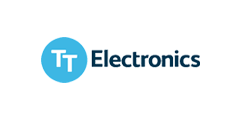Shielded Surface Mount Power Inductors for Automotive Applications

Vehicle electrical subsystems consist of all the electronic components and wiring that control the flow of power between various other interconnected subsystems (climate control, engine, fuel, etc.). They fulfill a computational role by interfacing with sensors and integrated circuitry to properly regulate input/output signals from the underlying power system. With the onset of hybrid electric and plug-in hybrid electric vehicles (HEV/PHEV), the performance of these subsystems has become increasingly integral to the driver and passenger experience.
Power inductors play a pivotal role in these vehicle electronics, performing the duty of voltage conversion at multiple interfaces within – and between – the primary subsystems. Also known as chokes or coils, power inductors are passive electronic components that generate a magnetic field when a current flows through them. This enables a variety of key functionalities including electromagnetic interference (EMI) noise filtering, energy storage, frequency conversion, reduced signal losses, and voltage conversion.
Outlining Automotive Power Inductors
The underlying concepts of power inductance were first described in the 19th Century under the overarching field of electrodynamics. High-precision part manufacturers today still operate on complex formulae first established by theoretical physicists almost two-hundred years ago, such as Faraday’s law and Lenz’s law.
Briefly: Faraday’s law states that a change in magnetic flux (Φ) will induce an electromotive force. This is intrinsically linked to Lenz’s law, which states that the induced force always results in a current with a magnetic field that opposes the change in the original magnetic flux. This is the basic operating principle of power inductors and various other electronic components (i.e. transformers). This can all seem fairly enigmatic to designers seeking to satisfy up to 100 different applications within the electrical subsystem; each one deriving from the battery voltage.
Here is just a selection of the areas that power inductors can be used throughout vehicular subsystems:
Anti-lock braking systems
Door power modules
Electrical power steering (EPS)
Engine control modules
HEV/PHEV power systems
Instrument panel
LED lighting and display
Night vision systems
Supplemental restraint systems (SRS)
Telematics systems
Each of these application areas is likely characterized by different performance parameters, which can complicate the calculation of current ratings and inductance requirements to select an appropriate part.
Shielded Power Inductors from TT Electronics
TT Electronics has curated a catalog of high-performance shielded power inductors for automotive applications, benefiting from the higher inductance value offered by their shielded configuration. These robust, magnetically-shielded solutions have small form factors and high saturation currents for better performance in tandem with practically any automotive electrical system.
Among these is a proprietary selection of surface mount power inductors, including:
- +1 Like
- Add to Favorites
Recommend
This document is provided by Sekorm Platform for VIP exclusive service. The copyright is owned by Sekorm. Without authorization, any medias, websites or individual are not allowed to reprint. When authorizing the reprint, the link of www.sekorm.com must be indicated.
























































































































































































































































































































































































































































































































































































































































































































































































































































































































